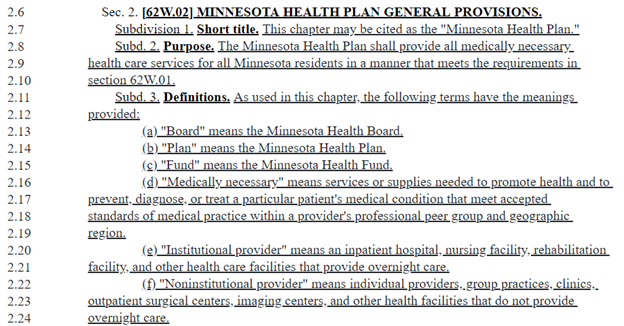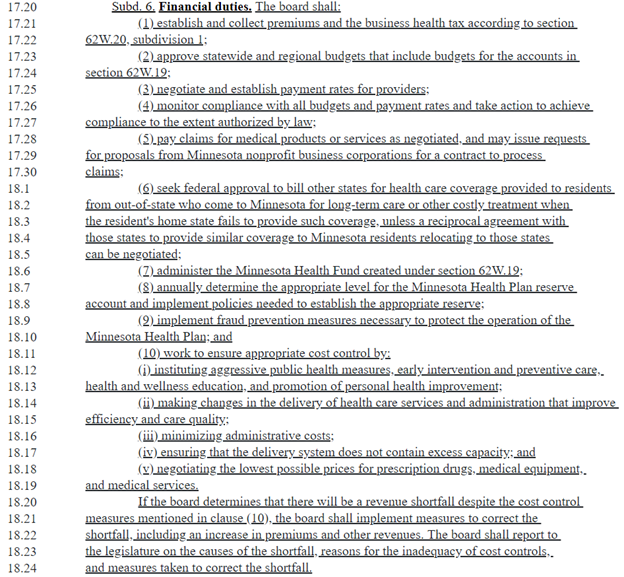Debunking politicians’ bogus jobs-creation claims
By John A. Spry
St. Paul Pioneer Press (MN) – April 23, 2017
You might think that President Donald Trump and Minnesota Gov. Mark Dayton don’t have a lot in common. But they both use the same flawed reasoning to claim that they can create jobs by borrowing money to fund construction projects. They produce bogus jobs numbers by omitting costs of their proposed projects from their calculations.
Trump’s “Priority List for Emergency and National Security Projects” claims that spending $137.5 billion on 50 infrastructure projects will directly create 193,350 job-years. A job-year is one job that lasts for one year.
Gov. Dayton’s “2017 Jobs Proposal” claims that borrowing $1.5 billion and funding his list of bonding projects would create 22,950 jobs.
The comically false precision of both executives’ job claims is a hint that these numbers may not survive scrutiny. No competent forecaster would ever claim to be so precise as to be able to forecast national or statewide employment effects to within 50 jobs.
The correct way to budget for capital expenditures, like infrastructure projects, is to carefully identify and measure both the benefits and costs of each project.
The cost of each project includes both the cost of spending on concrete, steel, and other inputs and the wage bill to hire workers. Gov. Dayton claims “that for every $1 million in construction project spending in Minnesota approximately 15.3 jobs are generated.” Dayton’s erroneous analysis labels the cost to taxpayers to pay workers as a benefit. The expense of paying workers is a cost, not a benefit, to the government.
When we, as taxpayers, use concrete, steel, and workers to build a publicly financed project those resources are not available for alternative uses in the private sector economy. Therefore, the use of these resources for a publicly financed project are a cost to society.
The cost of a proposed project includes both the dollars of tax revenue collected to finance the project and the dollars of value destroyed by the tax distortions, or bad decision-making created by the tax rates to raise tax revenue. Trump and Dayton incorrectly omit the cost of tax distortions created to fund their proposed projects because their analysis fails to acknowledge that borrowed money is paid back with tax dollars.
These errors by the Trump and Dayton administrations would embarrass any accounting student, let alone a competent practitioner of real-world capital budgeting.
Gov. Dayton’s proposed $7.85 million expenditure to restore and open the closed Minneapolis Veterans Home Truss Bridge provides a helpful example of capital budgeting. This bridge, built in 1908, has been closed since 2014 because of severe corrosion.
An open and safe bridge connecting the Veterans Home and Hiawatha Avenue over Minnehaha Creek is the benefit of this project. A cost-benefit analysis would add up the value of each routine trip over the bridge plus the even higher value of allowing emergency vehicles quicker access to the Veterans Home. These benefits should be weighed against the costs of inputs and labor to fix the bridge.
This correct approach to capital budgeting explicitly recognizes the tradeoffs between the benefits of public projects and their costs.
Unfortunately, President Trump and Gov. Dayton only measure inputs into projects. They make a common mistake by not measuring the benefits of their proposed projects. They compound their mistakes by classifying the costs of inputs into projects as the benefit from the project.
This mistaken analysis logically leads to the incorrect conclusion that we could have more jobs if only we borrowed more and more money to run up the size of the government debt. Greece’s national debt of 177 percent of its GDP and its 23 percent unemployment rate shows the error of this mistaken analysis.
This mistaken analysis fails to tell the difference between proposed projects that create value for society and proposed projects that destroy value. When the government approves projects that cost more than their benefits the government makes its citizens poorer.
The government should avoid hurting people by making them poorer.
As Abraham Lincoln observed, “There are few things wholly evil or wholly good. Almost everything, especially of government policy, is an inseparable compound of the two; so that our best judgment of the preponderance between them is continually demanded.”
President Trump and Gov. Dayton should follow Lincoln’s advice by weighing all of the costs of proposed projects against all of the benefits from proposed projects as they consider infrastructure spending.
John A. Spry of St. Paul is an associate professor in the Department of Finance at the University of St. Thomas. He’s on Twitter at @JohnASpry




